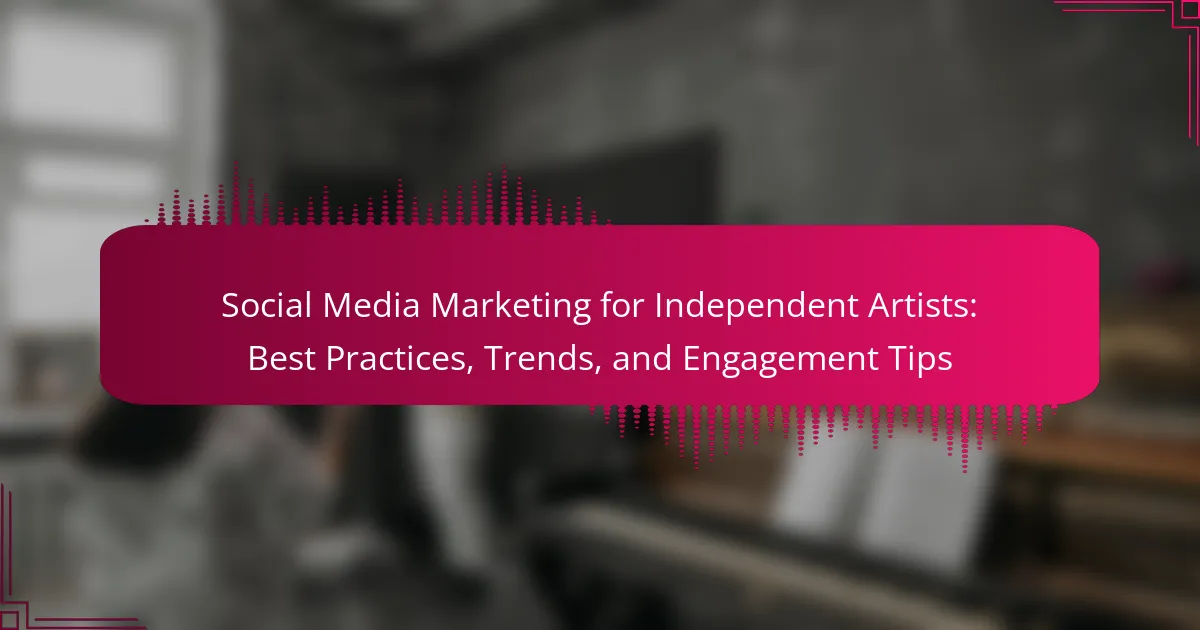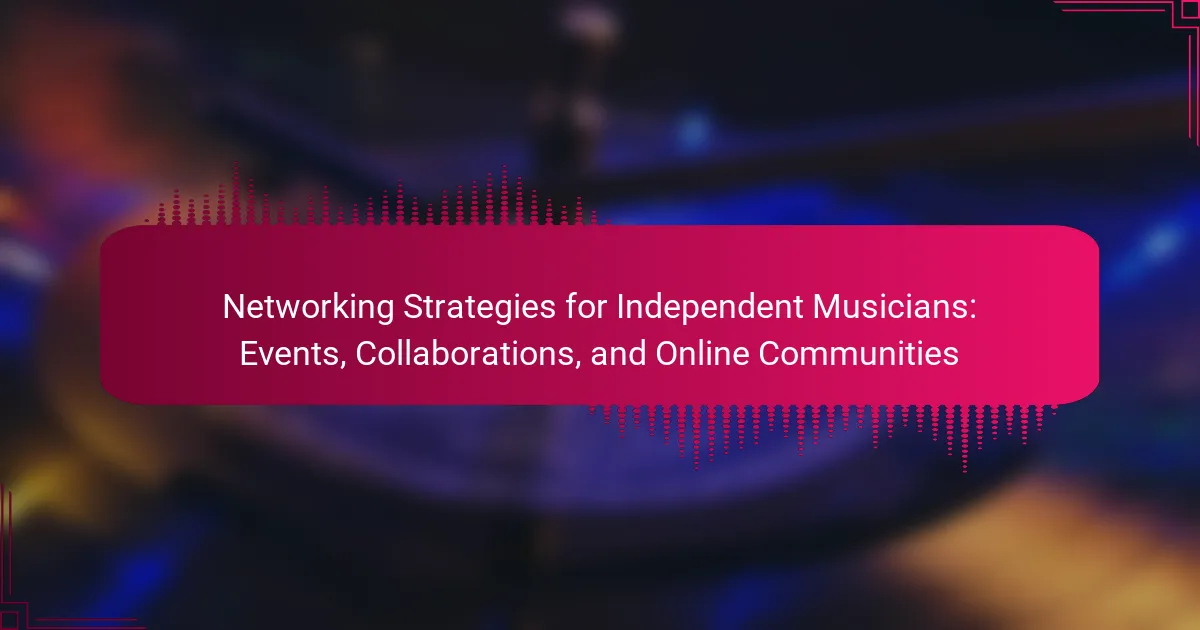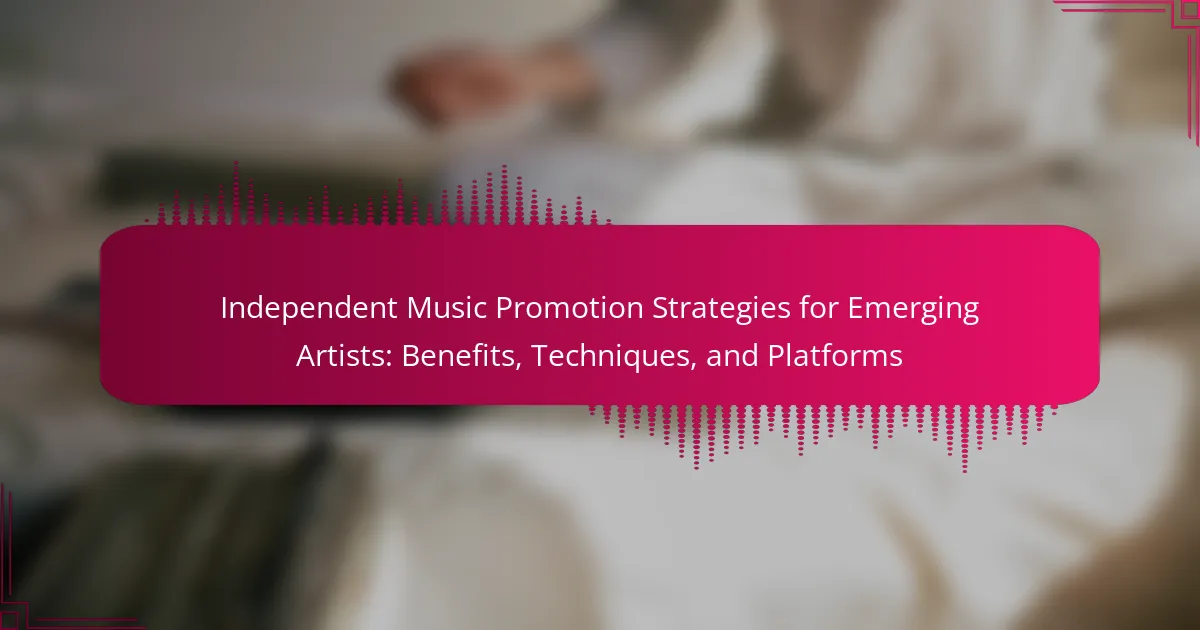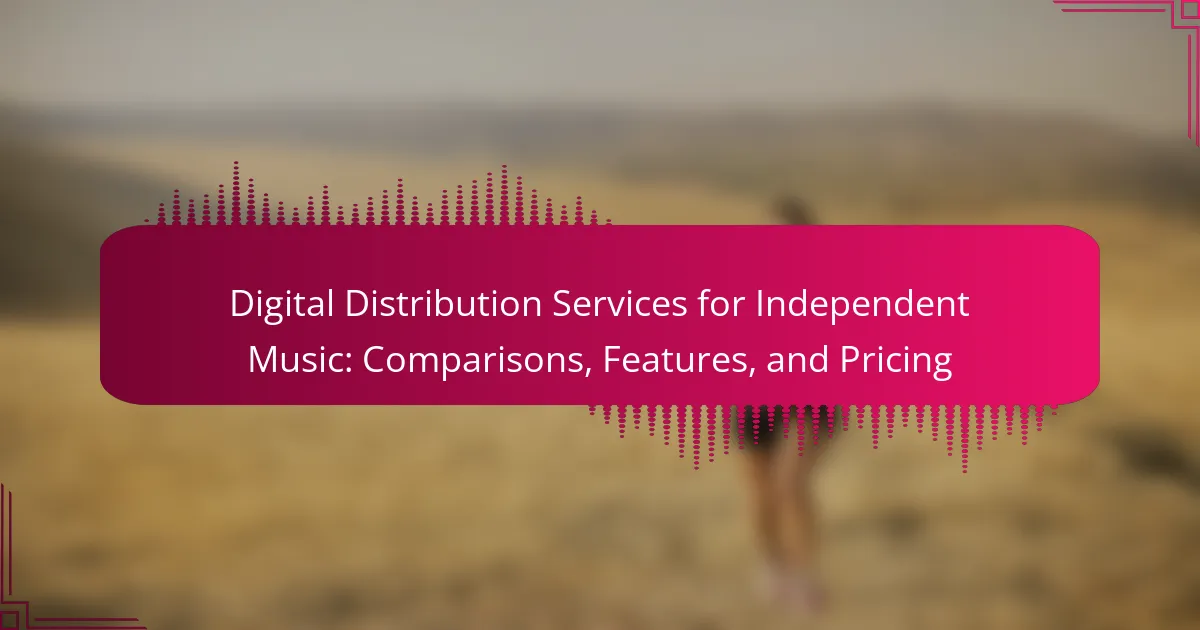Building a strong independent music brand is essential for artists facing market saturation and limited resources. Establish a unique identity to foster audience loyalty, utilise effective storytelling techniques to connect with listeners, and leverage social media platforms like Instagram, TikTok, and YouTube to enhance engagement. Focus on creating authentic connections and delivering consistent content to maintain a dedicated fan base while adapting to cultural nuances for broader appeal.
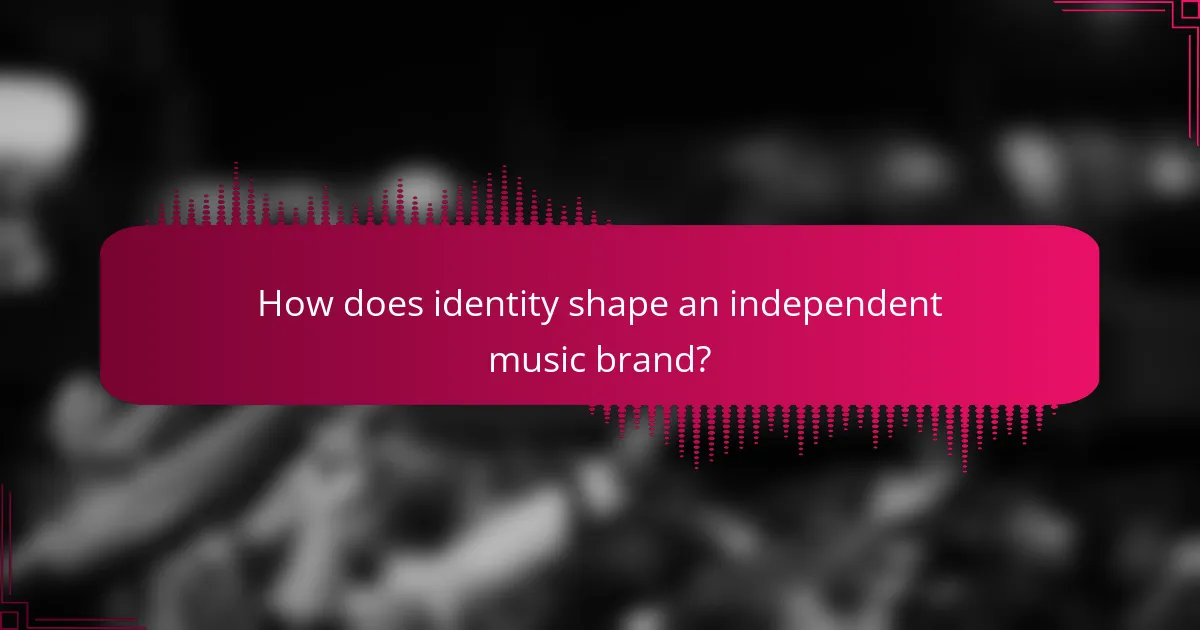
How does identity shape an independent music brand?
Identity significantly influences an independent music brand by establishing its unique narrative and fostering audience loyalty. A strong identity helps differentiate the brand in a crowded market, allowing artists to connect deeply with listeners. This connection often stems from personal stories, cultural influences, and authentic expressions that resonate with target audiences. As a result, brands with a clear identity can cultivate a dedicated fan base, enhancing their visibility and impact in the music industry.
What are the key elements of a strong music brand identity?
A strong music brand identity includes clear messaging, visual elements, and authentic storytelling. These elements help artists connect emotionally with their audience and differentiate themselves in a competitive market.
Key elements of a strong music brand identity include:
1. Unique Visual Identity: Logos, colour schemes, and design elements that reflect the artist’s style.
2. Consistent Messaging: Cohesive language and themes across platforms to reinforce brand values.
3. Authentic Storytelling: Personal narratives that resonate with fans and build deeper connections.
4. Audience Engagement: Interactive content and communication that fosters community and loyalty.
5. Strategic Positioning: Clear understanding of the target audience and market niche.
These attributes collectively shape a compelling music brand that can thrive independently.
Why is visual branding important for musicians?
Visual branding is crucial for musicians as it establishes identity, enhances storytelling, and fosters audience connection. A strong visual brand helps musicians convey their unique message and differentiate themselves in a crowded market. Consistent visuals, such as logos and colour schemes, create recognition and loyalty among fans. Moreover, effective visual branding can amplify a musician’s narrative and emotional impact, making their music more relatable. Ultimately, visual branding is a vital tool for building a cohesive and memorable independent music brand.
How can musicians create a memorable logo and artwork?
Musicians can create a memorable logo and artwork by focusing on simplicity, relevance, and uniqueness. A strong logo should reflect the artist’s identity and resonate with the target audience. Consistency in design across all platforms enhances recognition. Engaging storytelling through visuals can deepen audience connection, making the artwork more impactful. Collaborating with skilled designers can also elevate the quality and creativity of the final product, ensuring it stands out in a crowded market.
What role does genre play in brand identity?
Genre significantly shapes brand identity by influencing audience perception and emotional connection. It defines the narrative style, visual aesthetics, and marketing strategies. A well-defined genre helps artists resonate with specific demographics, fostering loyalty and engagement. For instance, a pop artist may focus on vibrant visuals and catchy hooks, while an indie musician might emphasise storytelling and authenticity. This alignment between genre and brand identity enhances recognition and differentiates the artist in a crowded market.
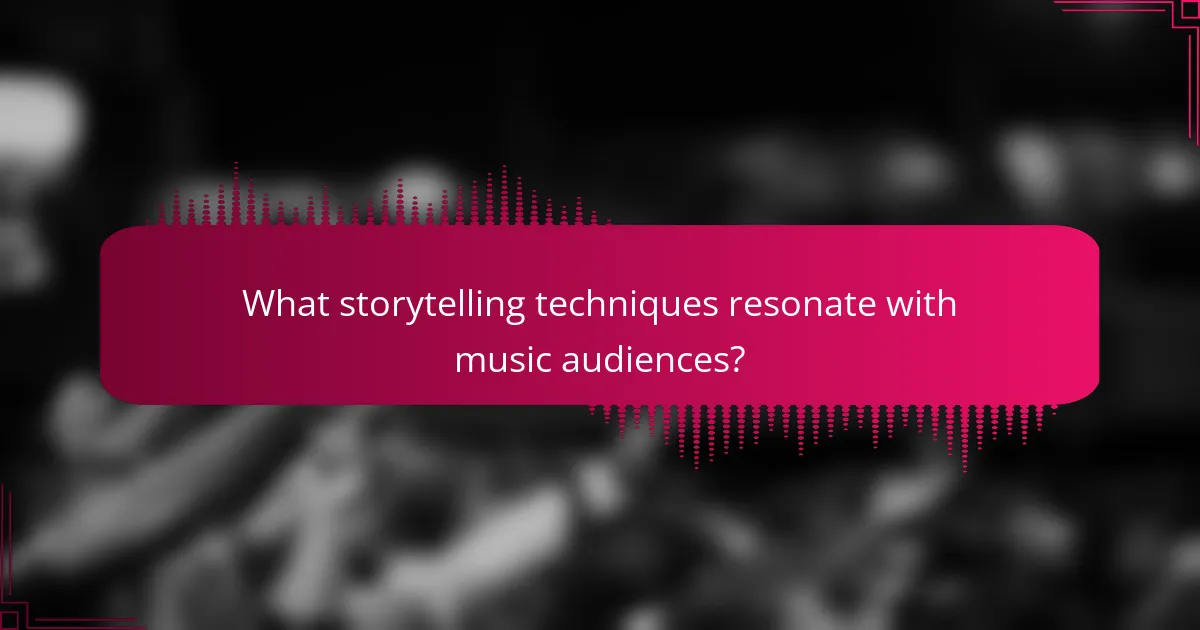
What storytelling techniques resonate with music audiences?
Storytelling techniques that resonate with music audiences include personal narratives, emotional authenticity, and relatable themes. Personal stories create a connection, allowing listeners to see themselves in the music. Emotional authenticity fosters trust and engagement, while relatable themes ensure the music reflects shared experiences. These techniques enhance audience connection and strengthen the artist’s independent brand identity.
How can personal narratives enhance a music brand’s story?
Personal narratives can significantly enhance a music brand’s story by fostering deeper emotional connections with the audience. They create authenticity, allowing listeners to relate personally to the artist’s journey. This connection can lead to increased loyalty and engagement, essential for independent music brands. Personal stories also differentiate the brand, showcasing unique experiences that resonate with fans, making the music more impactful.
What are effective ways to share your story through music?
To share your story through music effectively, focus on authenticity, emotional connection, and audience engagement. Use personal experiences to craft relatable lyrics that resonate with listeners.
Incorporate visual storytelling through music videos or live performances, enhancing the narrative. Utilise social media platforms to share behind-the-scenes content and interact with fans, fostering a sense of community.
Collaborate with other artists to blend stories and reach wider audiences, creating diverse musical experiences. Lastly, consistency in your brand’s message and style helps reinforce your identity and keeps your audience engaged.
How does authenticity influence audience connection?
Authenticity significantly enhances audience connection by fostering trust and relatability. When independent music brands convey genuine stories, they resonate deeply with listeners, creating emotional bonds. This connection encourages loyalty and engagement, essential for sustaining a music career. Authenticity differentiates artists in a crowded market, making their unique narratives valuable. Ultimately, genuine expression cultivates a community around the brand, amplifying its reach and impact.
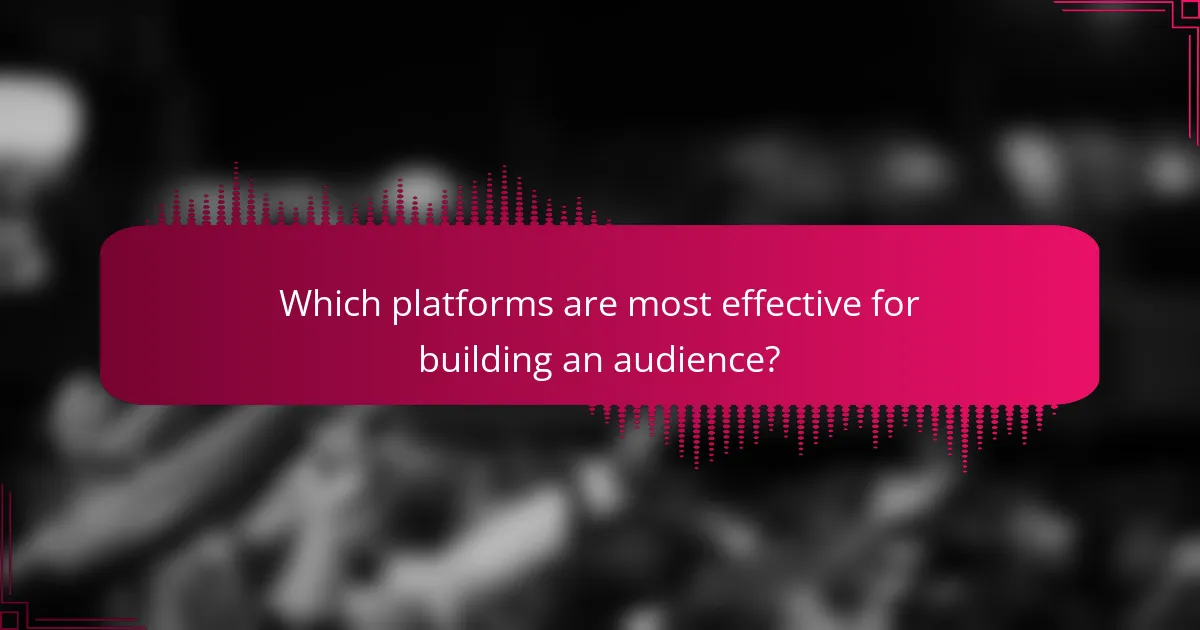
Which platforms are most effective for building an audience?
Social media platforms like Instagram, TikTok, and YouTube are most effective for building an audience in independent music. These platforms enable artists to showcase their identity, share storytelling elements, and connect with fans directly.
Instagram allows for visual storytelling through posts and stories, fostering engagement with followers. TikTok’s short-form video format encourages creativity and virality, making it easier for music to reach wider audiences. YouTube serves as a hub for longer content, including music videos and behind-the-scenes footage, enhancing audience connection.
Each platform offers unique attributes that cater to different aspects of audience building. Engaging content tailored to platform strengths can significantly enhance an artist’s reach and connection with their audience.
What role do social media platforms play in audience engagement?
Social media platforms are crucial for audience engagement in building an independent music brand. They facilitate direct interaction between artists and fans, fostering community and loyalty. Platforms like Instagram and TikTok allow musicians to share their stories, showcase their identity, and promote their music effectively. Engaging content, such as behind-the-scenes videos or live performances, can enhance connection and increase visibility. Moreover, analytics tools on these platforms help artists understand their audience’s preferences, enabling tailored content strategies. This dynamic interaction ultimately strengthens the brand and encourages fan investment.
How can musicians leverage streaming services for brand growth?
Musicians can leverage streaming services for brand growth by enhancing visibility and audience engagement. Streaming platforms enable artists to share their music widely, reaching diverse listeners. They can utilise playlists for exposure, collaborate with influencers, and engage with fans through social media integration.
Streaming analytics provide insights into listener demographics, helping artists tailor their marketing strategies. Regularly releasing content keeps audiences engaged and builds a loyal following. Unique storytelling through music and visuals can differentiate an artist’s brand, creating a memorable identity.
Additionally, musicians can explore partnerships with brands for cross-promotion, further amplifying their reach. By actively participating in the streaming ecosystem, artists can cultivate a robust and recognisable music brand.
What are the best practices for email marketing in the music industry?
To effectively market music via email, focus on building a strong brand identity, engaging storytelling, and fostering audience connections. Personalise content to resonate with fans, segment your audience for targeted messaging, and maintain a consistent schedule for communication. Use clear calls-to-action to drive engagement and track metrics to refine your approach.
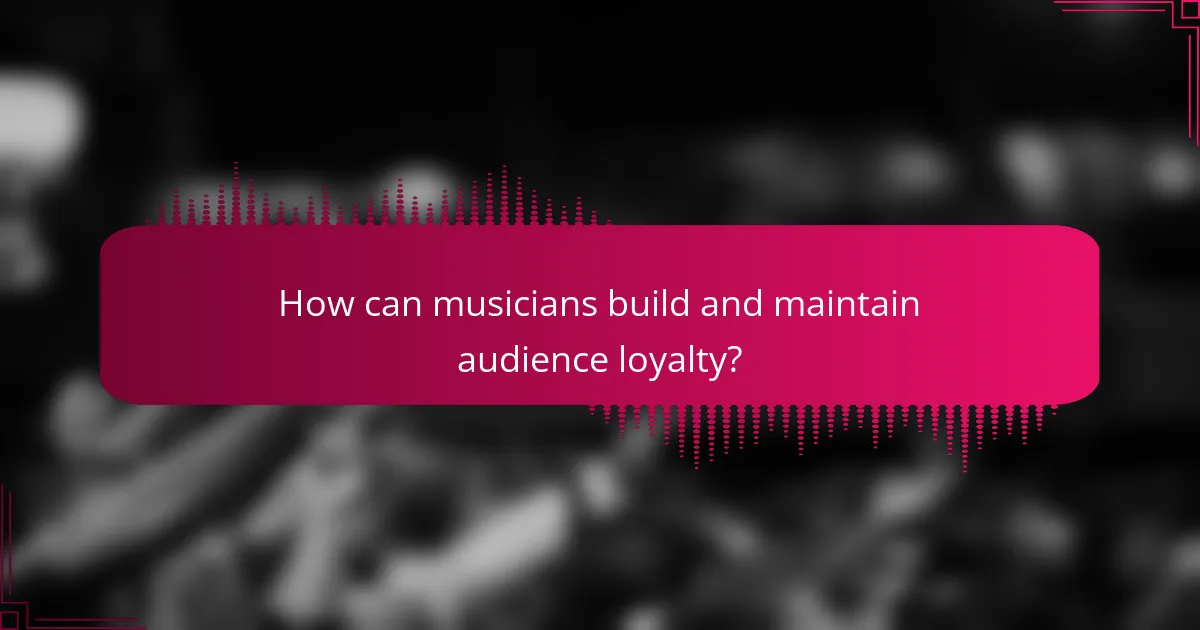
How can musicians build and maintain audience loyalty?
Musicians can build and maintain audience loyalty by creating authentic connections through storytelling and consistent branding. Engaging with fans on social media fosters community, while sharing personal narratives enhances relatability. Regular interaction, such as live Q&A sessions, strengthens bonds and encourages loyalty.
Additionally, musicians should focus on delivering quality content consistently, whether through music releases or exclusive behind-the-scenes access. This approach keeps the audience invested and eager for more. Unique attributes like an artist’s distinct sound or personal journey can further differentiate them in a crowded market, solidifying audience loyalty.
What strategies can be used to cultivate a community around a music brand?
Engaging with your audience through authentic storytelling and shared experiences cultivates a community around a music brand. Utilise social media to share behind-the-scenes content, host live Q&A sessions, and encourage fan-generated content. Foster collaboration with local artists and influencers to expand reach. Create exclusive events or virtual meetups to deepen connections and provide unique experiences. Regularly solicit feedback to adapt and evolve the brand, ensuring it resonates with the audience.
How does fan interaction impact brand perception?
Fan interaction significantly enhances brand perception by fostering loyalty and community. Engaging with fans creates a personal connection, making them feel valued. This interaction often leads to increased word-of-mouth promotion, as fans share their experiences. Additionally, brands that actively listen to their audience can adapt their messaging and offerings, aligning closely with fan expectations. This responsiveness can differentiate a music brand, establishing a unique identity that resonates with listeners. Ultimately, positive fan engagement cultivates a strong brand reputation and can drive long-term success.
What are the benefits of live performances for audience connection?
Live performances enhance audience connection by fostering emotional engagement, creating shared experiences, and enabling direct interaction. These elements strengthen the bond between the artist and the audience. Emotional engagement occurs as performers express their passion, making audiences feel more connected. Shared experiences, such as singing along or reacting to the performance, create a sense of community. Direct interaction, like Q&A sessions or crowd participation, personalises the experience, leaving lasting impressions. Together, these factors contribute to building a strong independent music brand through authentic connections.

What challenges do independent musicians face in branding?
Independent musicians face significant challenges in branding, including limited resources, audience engagement, and market saturation. They often lack financial backing for marketing efforts, making it difficult to establish a strong identity. Storytelling is crucial for connecting with audiences, yet many struggle to convey their unique narratives effectively. Additionally, the oversaturated music market complicates visibility, as countless artists compete for attention. Establishing a distinct brand identity becomes essential for standing out in this crowded landscape.
How can budget constraints affect branding efforts?
Budget constraints can significantly limit branding efforts in independent music. These limitations often restrict marketing reach, production quality, and audience engagement. For instance, lower budgets may result in fewer promotional materials or less effective advertising strategies. Consequently, independent artists might struggle to establish a strong, recognisable brand identity. This can hinder storytelling efforts, as compelling narratives often require investment in visuals and content creation. Moreover, without adequate resources, connecting with audiences becomes challenging, reducing the potential for community building and fan loyalty.
What common mistakes should independent musicians avoid?
Independent musicians should avoid common mistakes that hinder brand growth. Failing to define a clear identity can confuse audiences. Neglecting storytelling limits emotional connections. Ignoring audience engagement leads to missed opportunities. Underestimating marketing efforts can stall visibility. Lastly, not adapting to feedback can stifle development.
How can musicians overcome competition in the music industry?
Musicians can overcome competition by building a unique independent brand that connects with their audience. Establishing a strong identity through storytelling fosters emotional connections. Engaging with fans on social media enhances visibility and loyalty. Collaborating with other artists can expand reach and create diverse sounds. Utilising platforms for direct sales and streaming maximises exposure. Consistent branding and authentic interactions differentiate musicians in a crowded market.
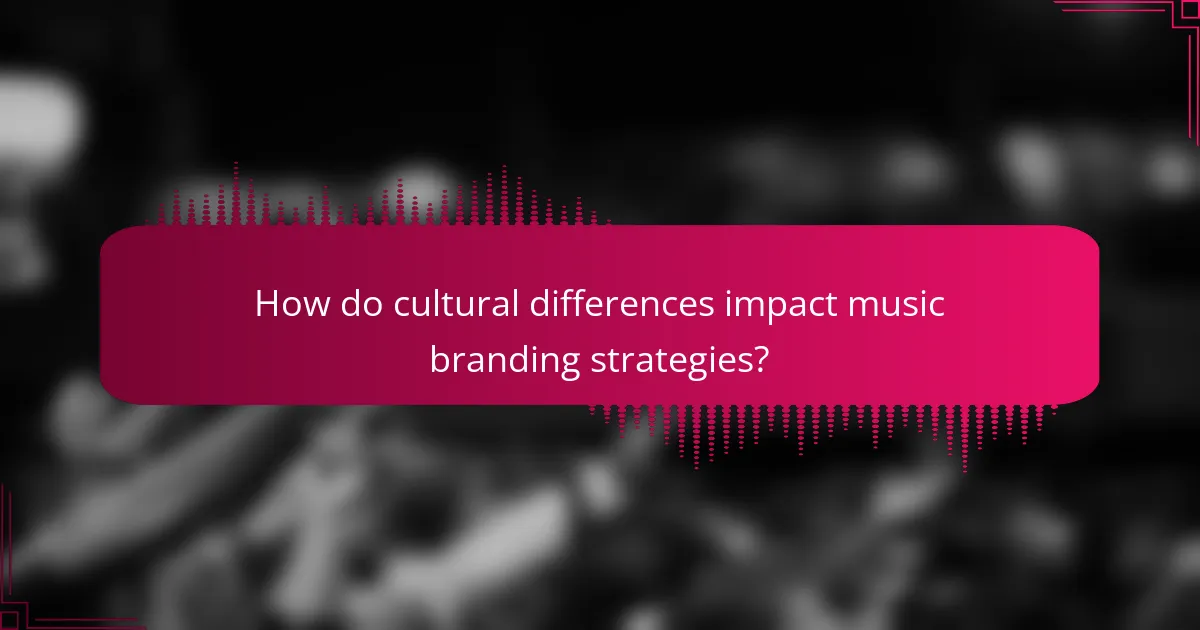
How do cultural differences impact music branding strategies?
Cultural differences significantly influence music branding strategies by shaping identity, storytelling, and audience connection. Brands must adapt their messaging to resonate with diverse cultural values and preferences. For instance, a brand targeting a Western audience may emphasise individualism, while one aimed at Eastern markets might highlight community and harmony. Understanding these nuances enhances emotional engagement and fosters loyalty. Additionally, incorporating local languages and cultural references can strengthen authenticity and relatability. Such tailored approaches ensure that independent music brands effectively connect with their intended audiences across various cultural landscapes.
What regional trends should independent musicians consider?
Independent musicians should consider regional trends in music consumption, cultural influences, and local collaborations. Understanding these elements can enhance brand identity and audience connection. For example, genres popular in specific areas may shape storytelling approaches. Additionally, leveraging local events can foster community engagement, making the music more relatable.
How can musicians adapt their branding for different markets?
Musicians can adapt their branding for different markets by tailoring their identity and storytelling. This involves understanding local cultures, preferences, and trends. For example, a musician might emphasise different themes in their lyrics or visuals based on regional influences. Engaging with local audiences through social media and collaborations can enhance connection. Additionally, adjusting merchandise and promotional strategies to reflect local tastes can improve market reception.
What unique attributes can set a music brand apart in various cultures?
Unique attributes that can set a music brand apart in various cultures include authenticity, cultural relevance, and innovative storytelling. Authenticity resonates deeply with audiences, fostering trust and loyalty. Cultural relevance ensures the brand connects with local traditions and values, enhancing relatability. Innovative storytelling captivates listeners, creating memorable experiences that differentiate the brand.
What are the implications of global music trends on local branding?
Global music trends significantly influence local branding by shaping audience expectations and cultural narratives. Independent music brands can leverage these trends to craft relatable identities and compelling stories. By connecting with local audiences through shared musical influences, brands enhance their relevance. This alignment fosters deeper emotional connections, driving loyalty and engagement. Additionally, unique regional elements can differentiate brands within a global context, creating a distinct presence that resonates with both local and international listeners.
What practical tips can help musicians optimize their branding efforts?
Musicians can optimise their branding by focusing on authenticity, storytelling, and audience engagement. Establish a unique identity that reflects personal values and musical style. Share compelling stories behind your music to connect emotionally with listeners. Use social media strategically to interact with fans and build a loyal community. Consistency in visuals and messaging across platforms reinforces brand recognition. Collaborate with other artists to expand reach and diversify your audience.
